Nestled in the serene embrace of nature lies a mountain house offering a breathtaking view that captivates the soul. Imagine waking up to the symphony of chirping birds and crisp mountain air, embracing tranquility like never before. This haven provides an escape from the hustle and bustle, inviting you to unwind amidst picturesque beauty. The contrast between urban chaos and this peaceful retreat is stark, promising a rejuvenating experience that soothes both mind and body.
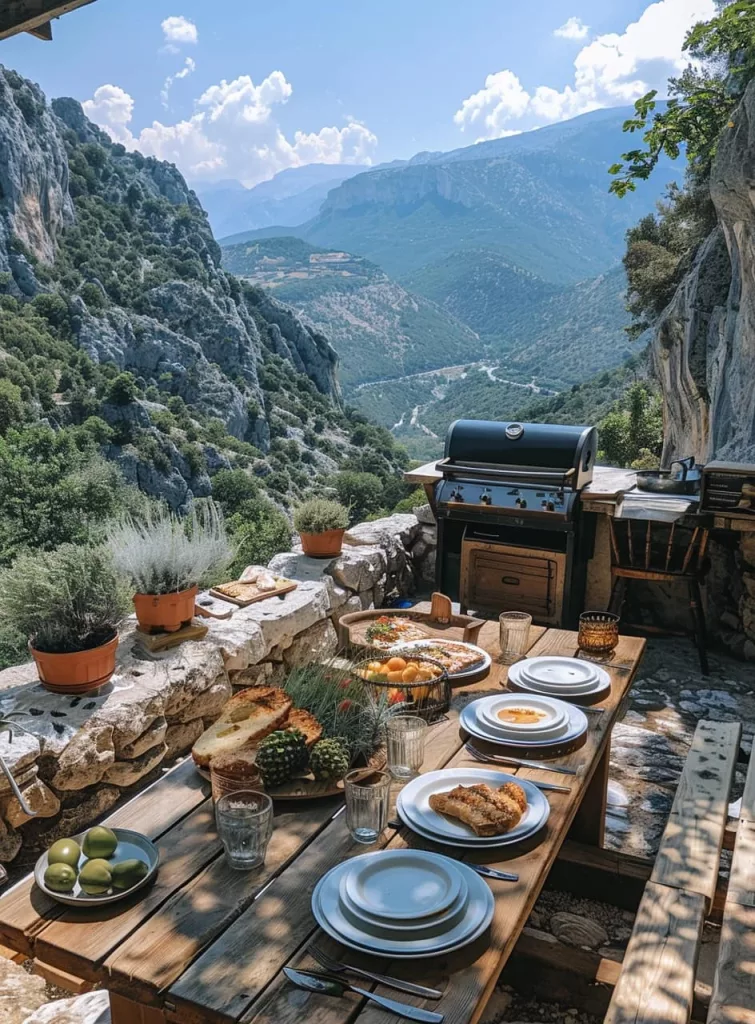
Exploring Mountain House Designs
Architectural Styles
Mountain houses showcase a diverse range of architectural styles, from rustic cabins to modern chalets. Each style reflects the surrounding landscape and local traditions. For example, log cabins are popular in wooded areas, blending seamlessly with nature.
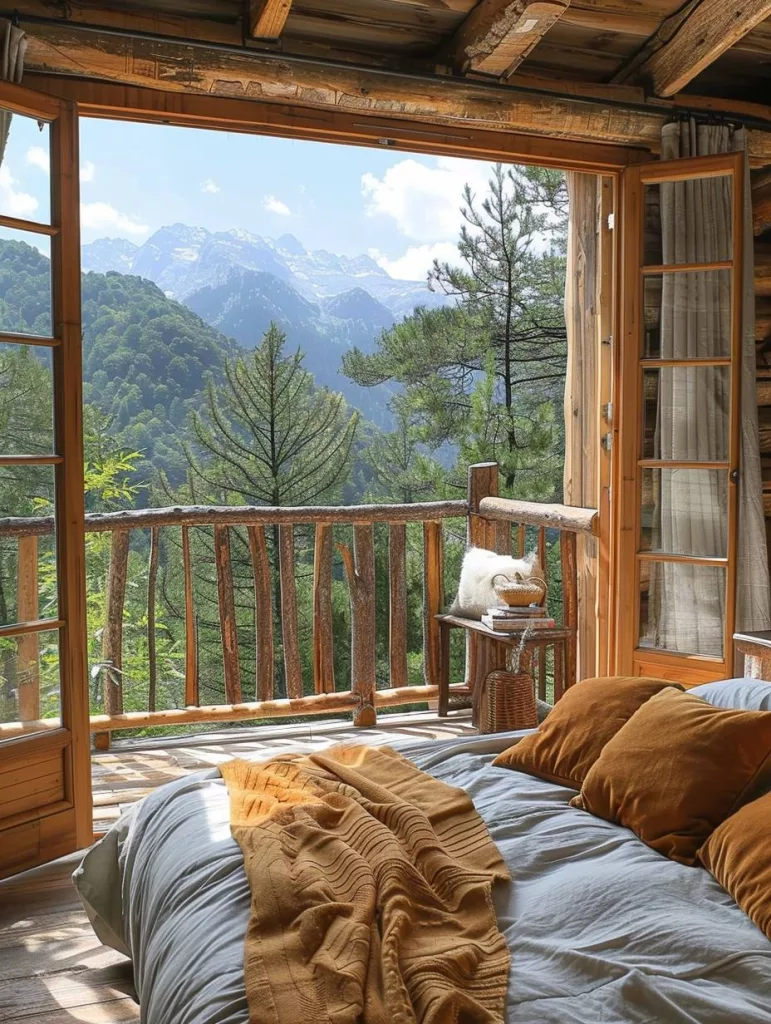
Unique Features
Mountain house designs often feature large windows that offer breathtaking views of the surroundings. Exposed beams and natural stone accents create a cozy and inviting atmosphere. These features enhance the connection between indoor living spaces and the great outdoors.
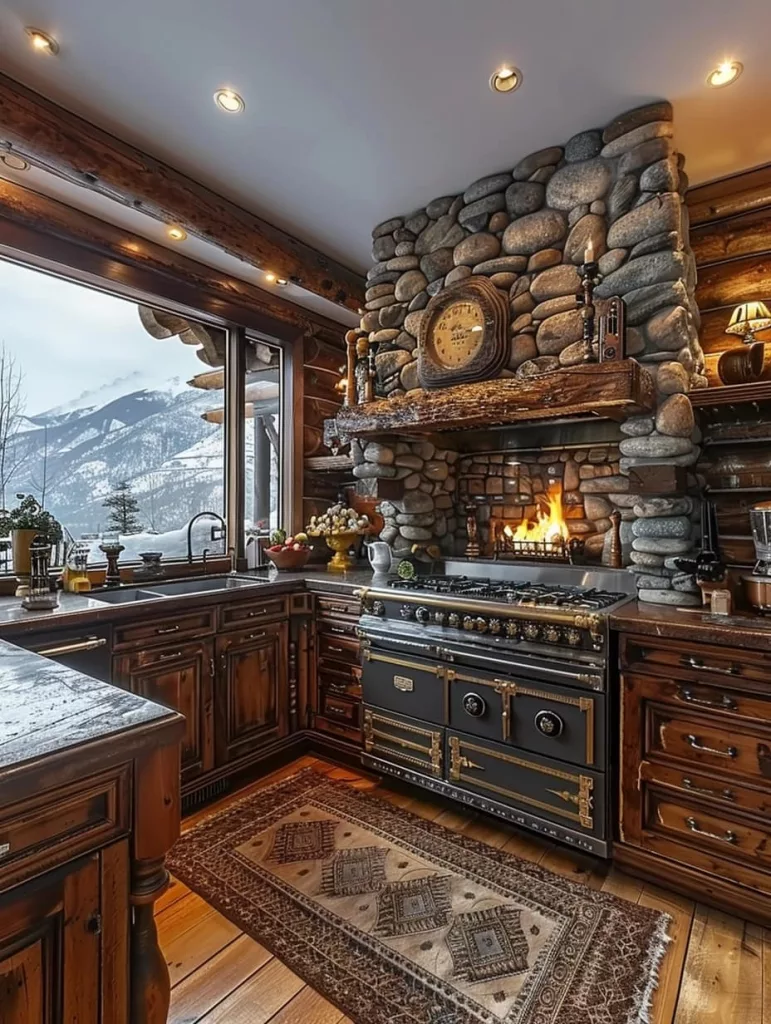
Materials and Layouts
The use of materials such as wood, stone, and metal adds warmth and character to mountain homes. Wood siding or shingles can provide a rustic charm, while stone facades add durability and visual interest. Open floor plans maximize natural light and airflow, creating a spacious feel within a compact footprint.
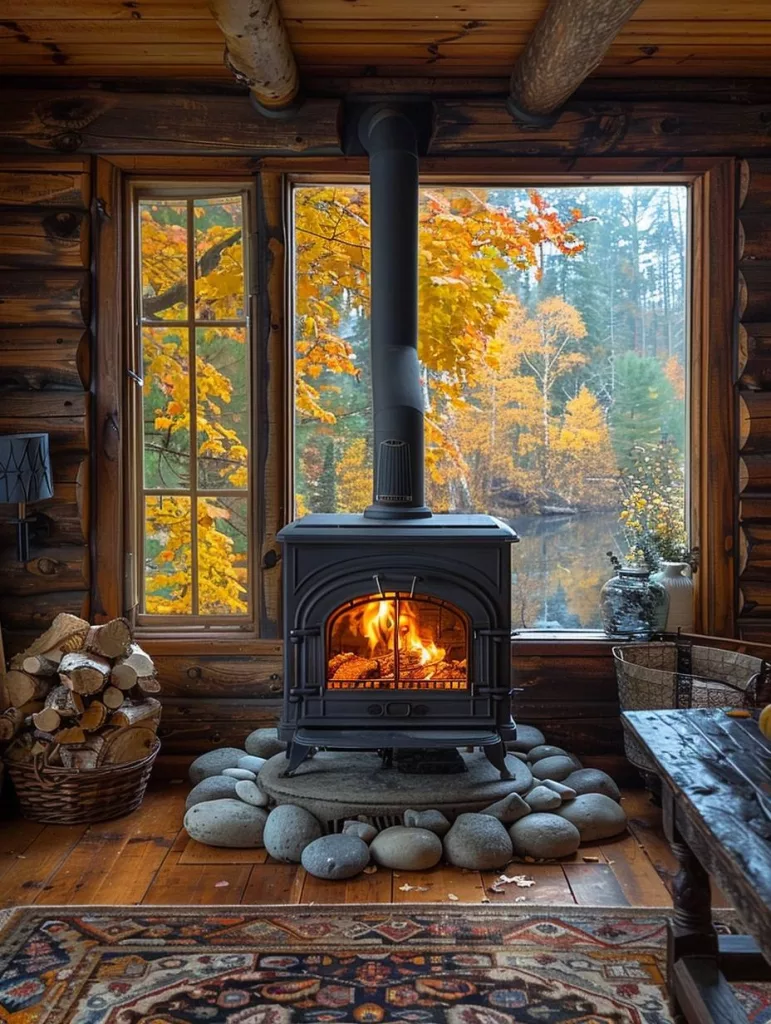
Capturing Breathtaking Mountain Views
Window Positioning
Position windows strategically to frame the perfect mountain landscape, allowing natural light to flood in. Opt for large windows that open up the space and offer unobstructed views.
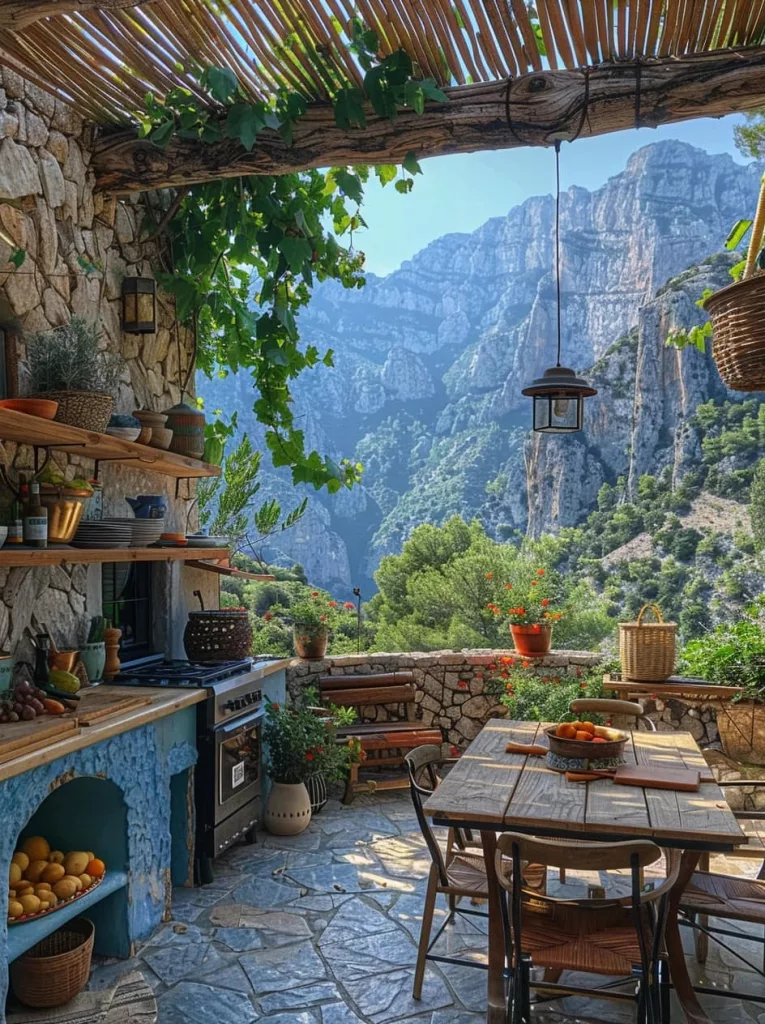
Embrace corner windows or floor-to-ceiling glass panels to create a seamless connection between the interior and exterior spaces. These design choices enhance the overall ambiance of your home while maximizing your enjoyment of the surrounding mountain view.

Incorporating Outdoor Elements
Blend indoor and outdoor spaces by incorporating natural elements like wood, stone, and plants into your interior design. Use earthy tones and textures to mirror the mountain landscape, bringing a sense of tranquility indoors.
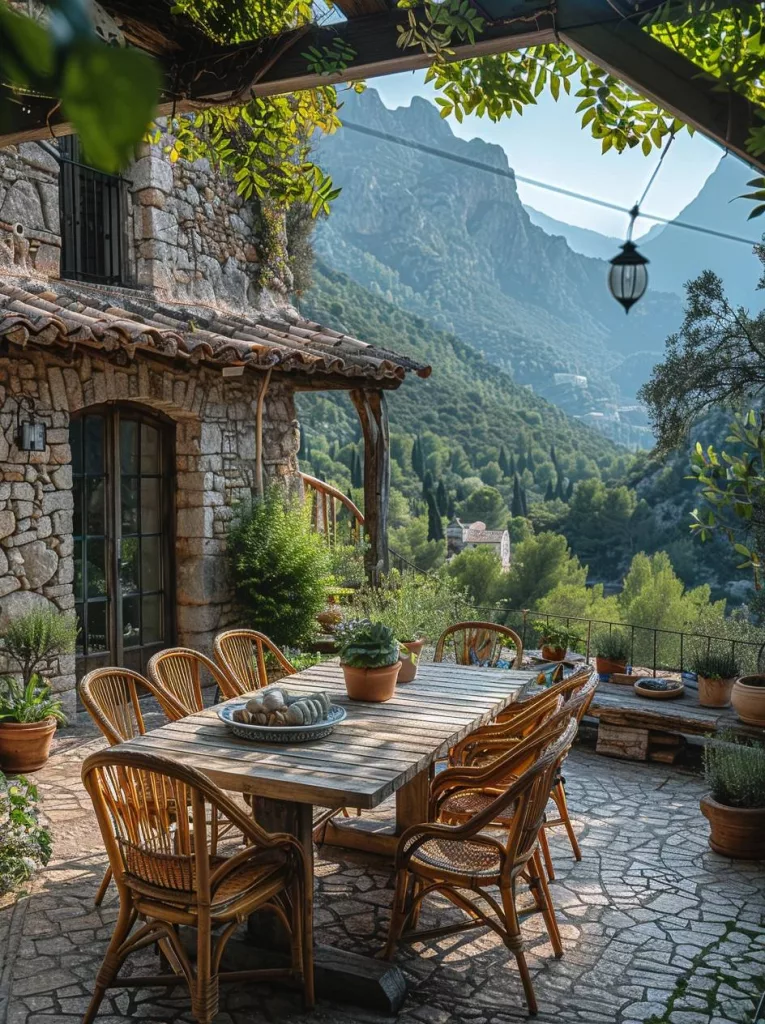
Consider adding a cozy fireplace or an indoor water feature inspired by nature to further enhance the connection with your surroundings. These elements not only add visual interest but also create a soothing atmosphere reminiscent of being in the midst of nature.
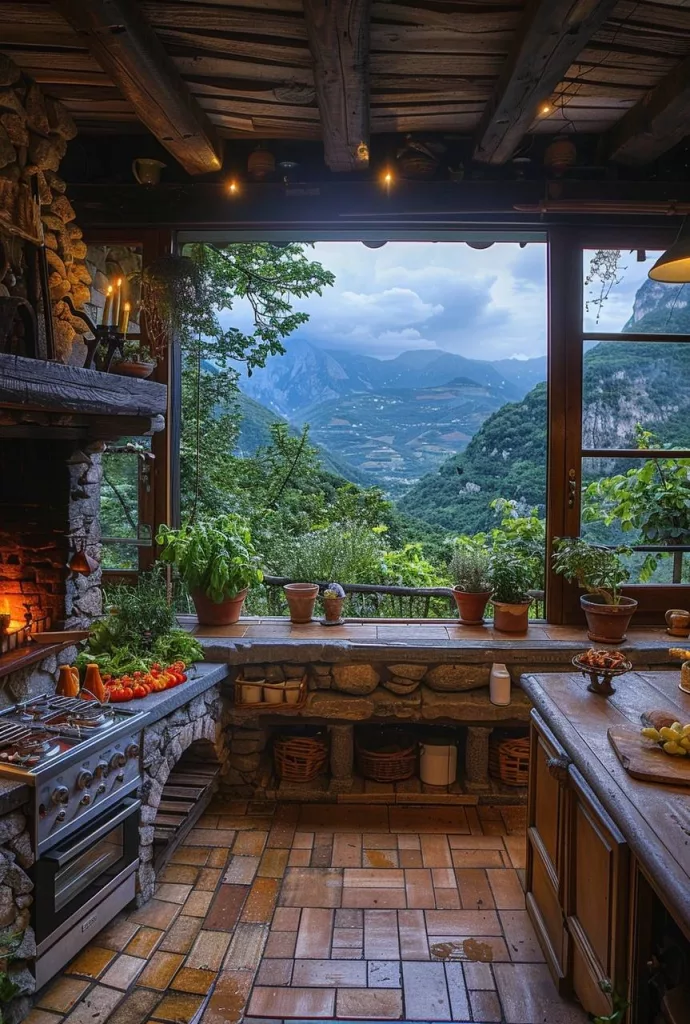
Balconies and Decks
Install spacious balconies or decks that provide ample space for outdoor seating areas where you can relax and soak in the stunning panoramic vistas. These outdoor extensions serve as perfect spots for enjoying morning coffee or hosting gatherings against a backdrop of majestic mountainscapes.
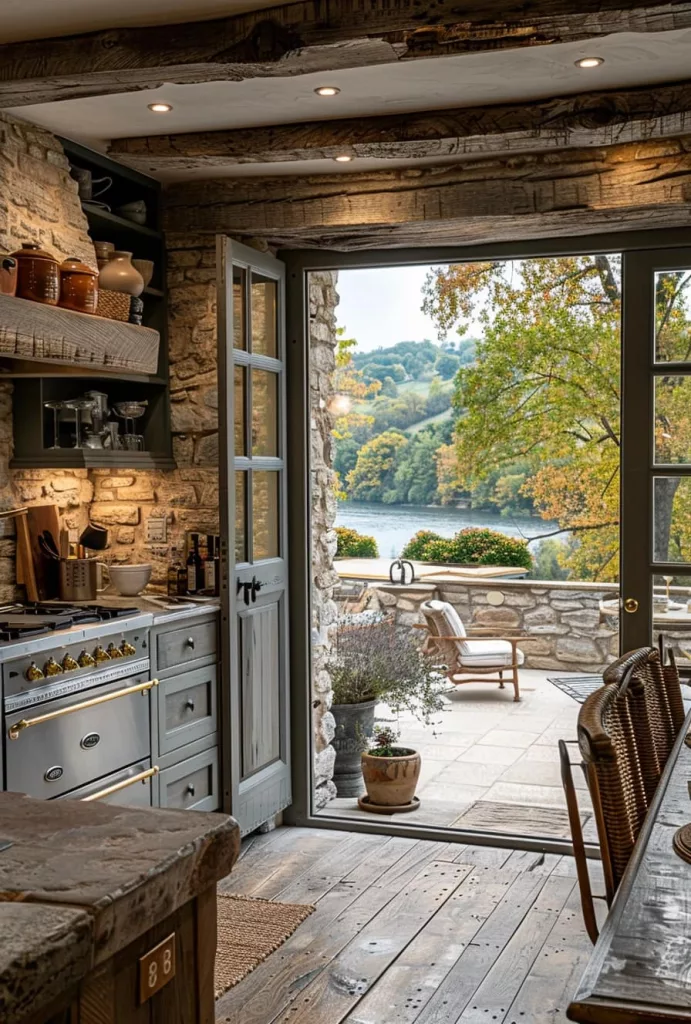
Maximize these outdoor areas with comfortable furniture, greenery, and ambient lighting to create inviting spaces that allow you to fully appreciate the beauty of nature from the comfort of your own home.
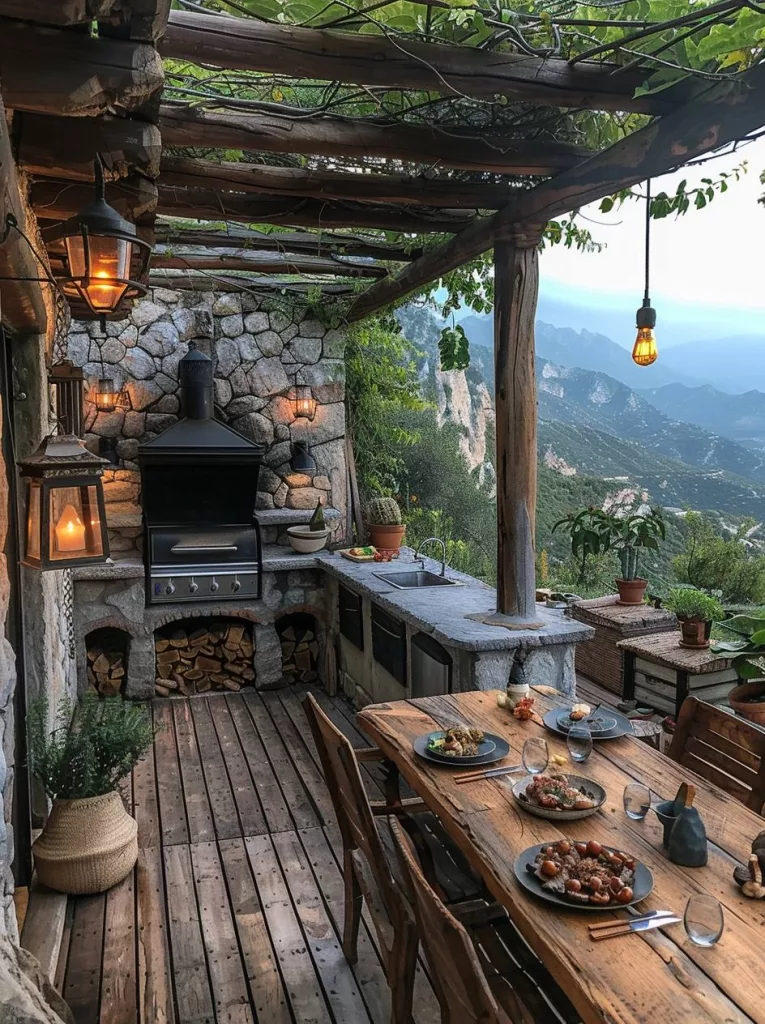
Enhancing Natural Beauty Around Homes
Landscaping Techniques
Enhance the natural beauty around mountain houses by employing landscaping techniques that seamlessly blend with the surroundings. Consider using elements like stone pathways, wooden decks, and strategically placed garden beds to create a cohesive outdoor space.
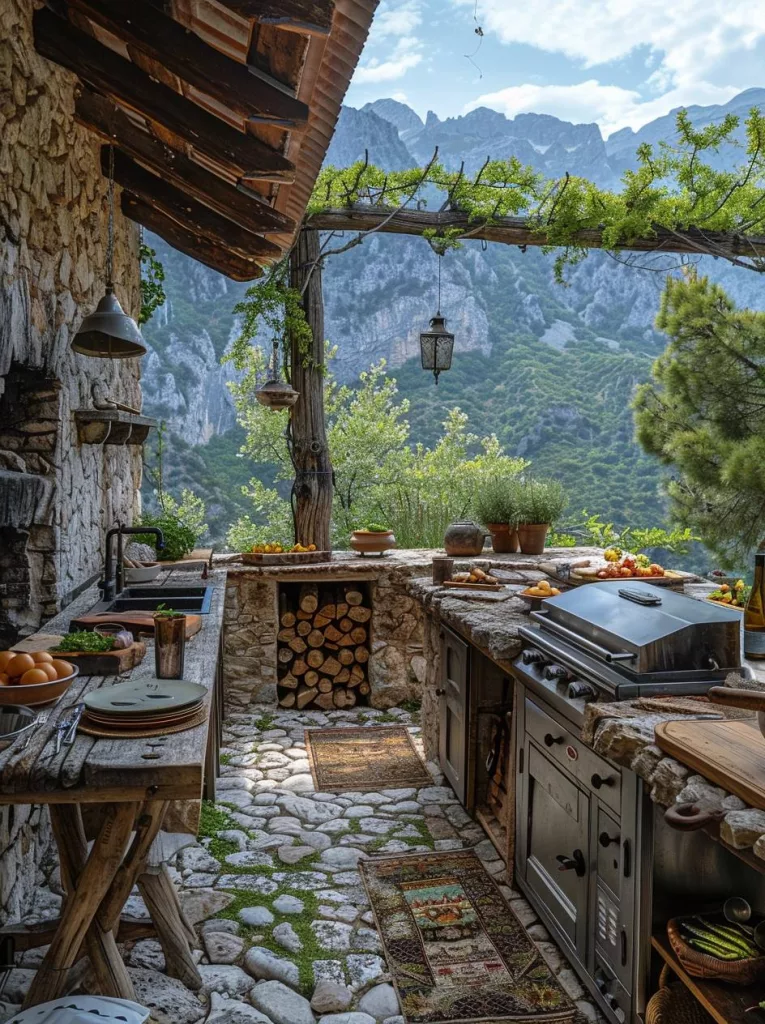
Incorporate native plants into your landscaping design to not only add visual appeal but also support the local ecosystem. Choose plants that thrive in the mountain environment, such as conifers, wildflowers, and shrubs that can withstand varying weather conditions.
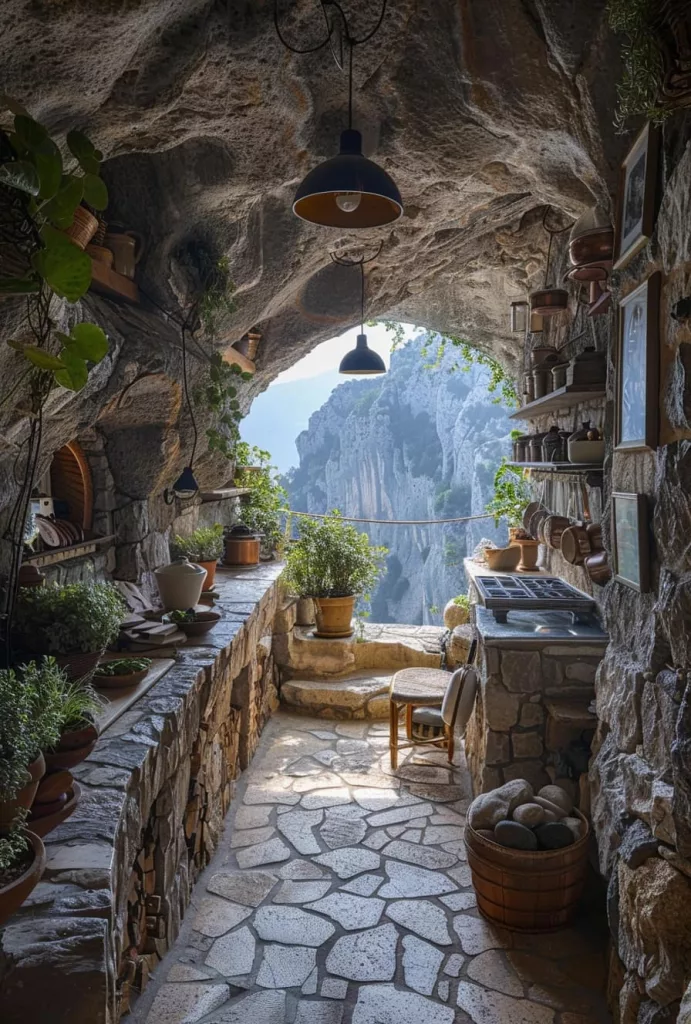
Sustainable Practices
Implement sustainable practices when designing the outdoor area of your mountain house. Utilize materials like reclaimed wood for decking or natural stone for retaining walls to reduce environmental impact. Install a rainwater harvesting system to irrigate your gardens efficiently while conserving water resources.

Create a habitat for local wildlife by incorporating bird feeders, butterfly gardens, and bat boxes into your landscape design. These additions not only attract diverse wildlife but also contribute to the overall biodiversity of the area.
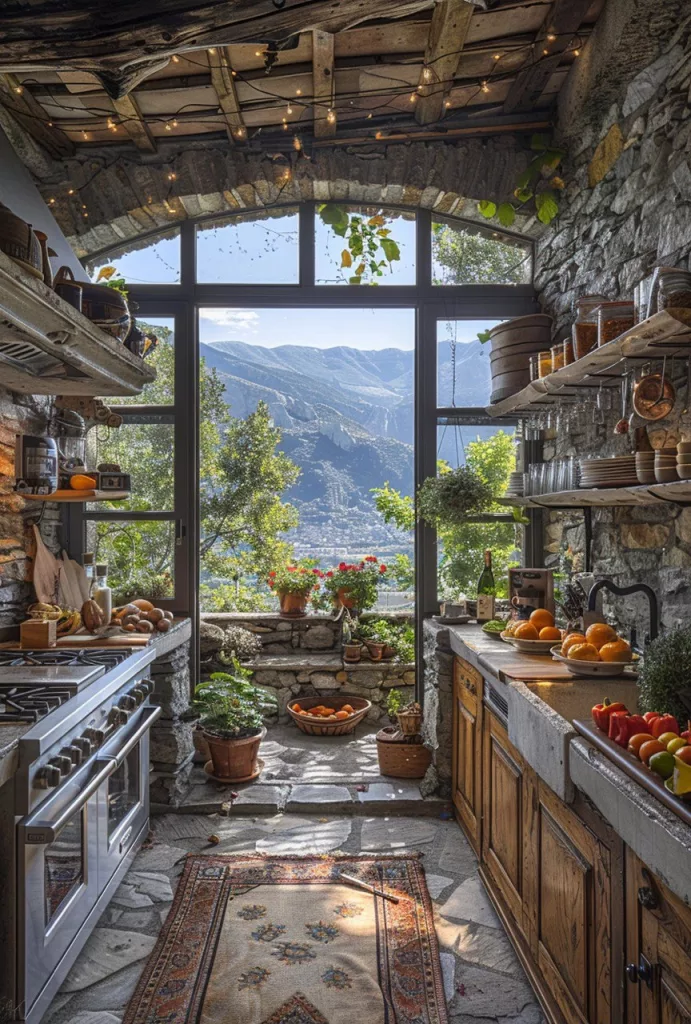
Architectural Tips for Mountain Homes
Structural Considerations
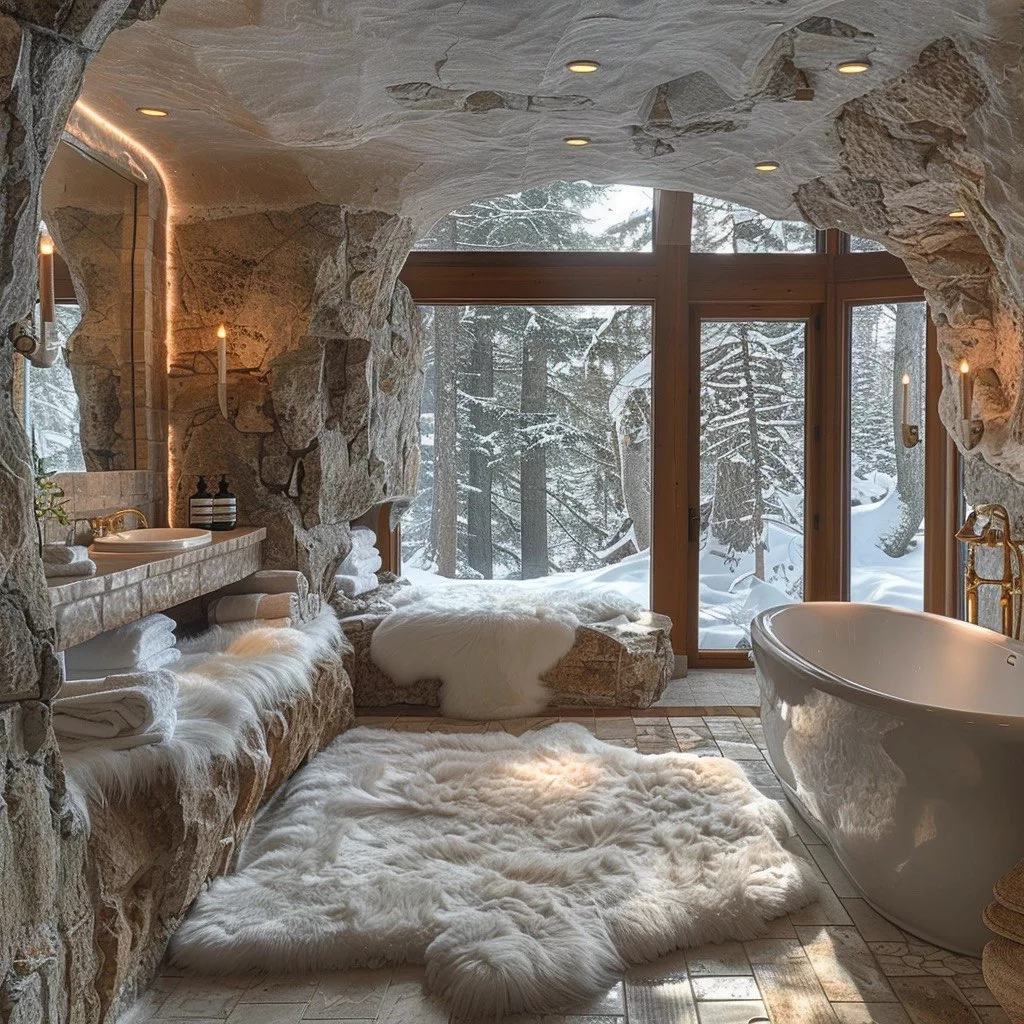
When building mountain homes, prioritize structures that can withstand the rugged terrain and harsh weather conditions. Ensure foundations are strong and stable to resist potential landslides or earthquakes. Opt for durable materials like stone or concrete for longevity.
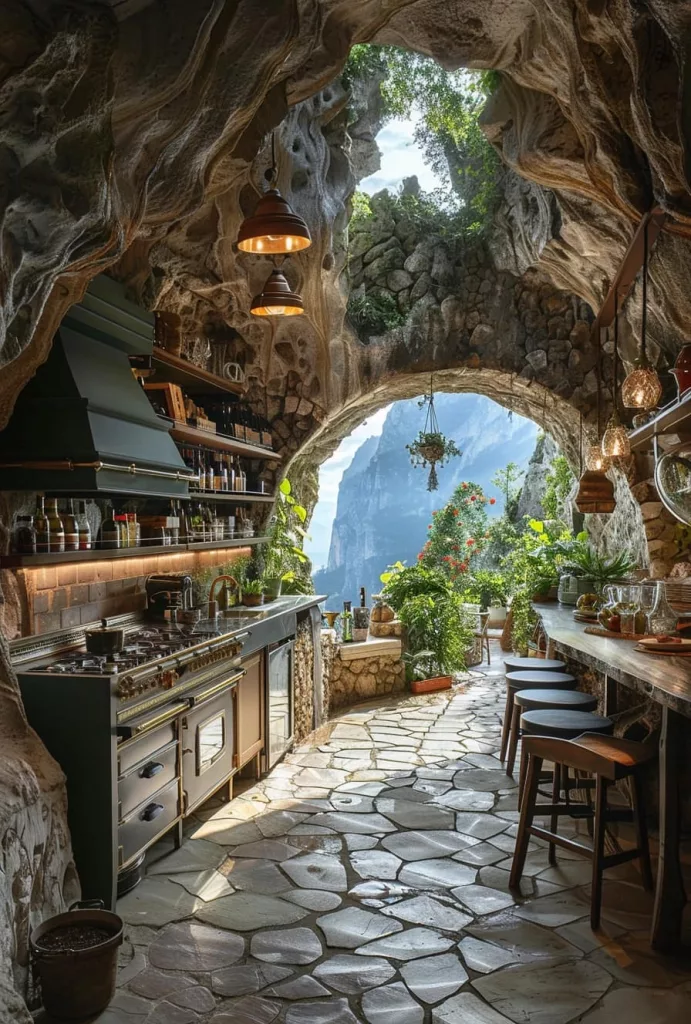
Energy-Efficient Designs
Incorporate energy-efficient designs tailored to mountain environments to maximize sustainability. Utilize passive solar heating by strategically placing windows to capture sunlight. Consider installing insulation to regulate indoor temperatures efficiently.
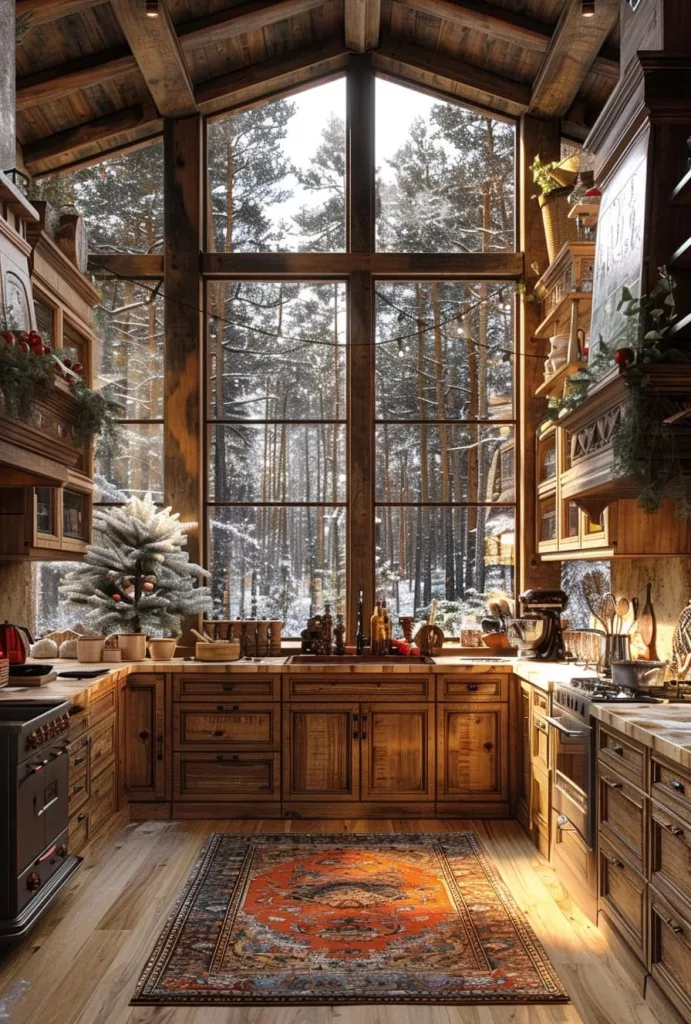
Aesthetics vs Functionality
Balance aesthetics with functionality in architectural choices for mountain homes. Prioritize large windows to showcase breathtaking views while also ensuring they are well-insulated for energy efficiency. Incorporate practical elements like storage solutions without compromising on design.
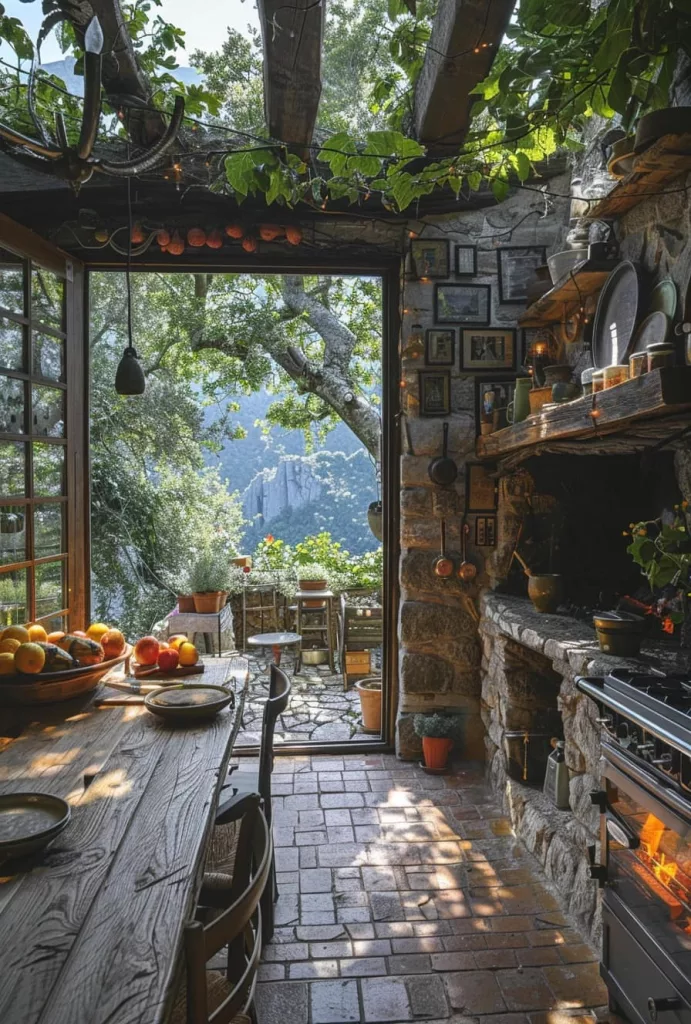
Personal Stories of Mountain Living
Challenges Faced
Living in a mountain house has its challenges, like dealing with extreme weather conditions and limited accessibility during winter. Residents often need to be prepared for power outages and the possibility of being snowed in.
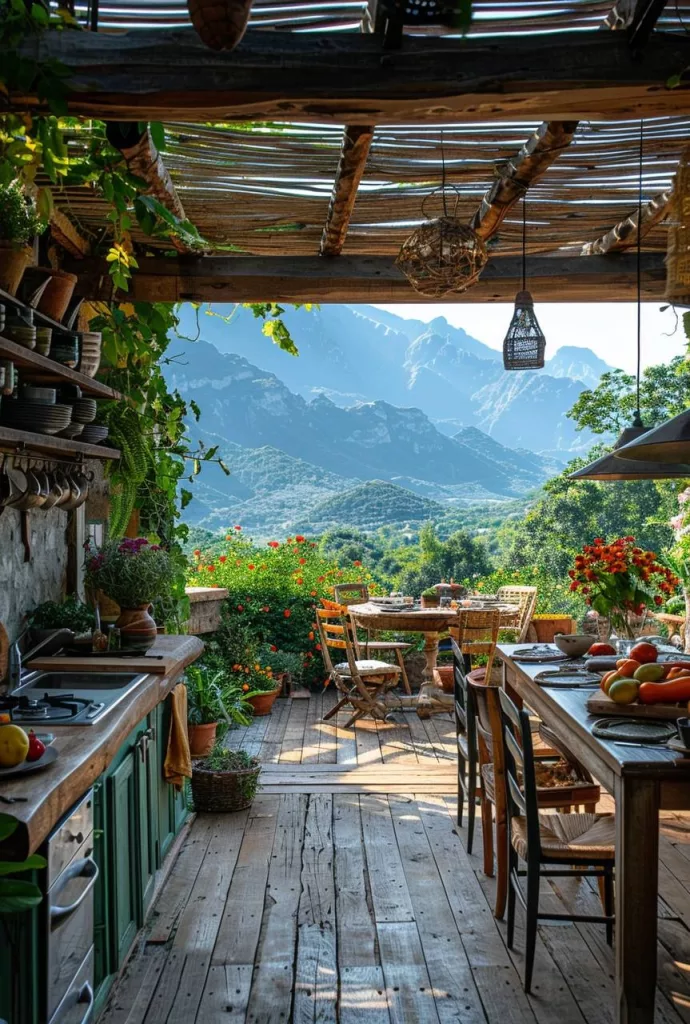
Adjusting to the high altitude can also be difficult initially, causing altitude sickness and breathing issues until one acclimatizes. The lack of amenities and services nearby can pose challenges, requiring careful planning for groceries and emergencies.
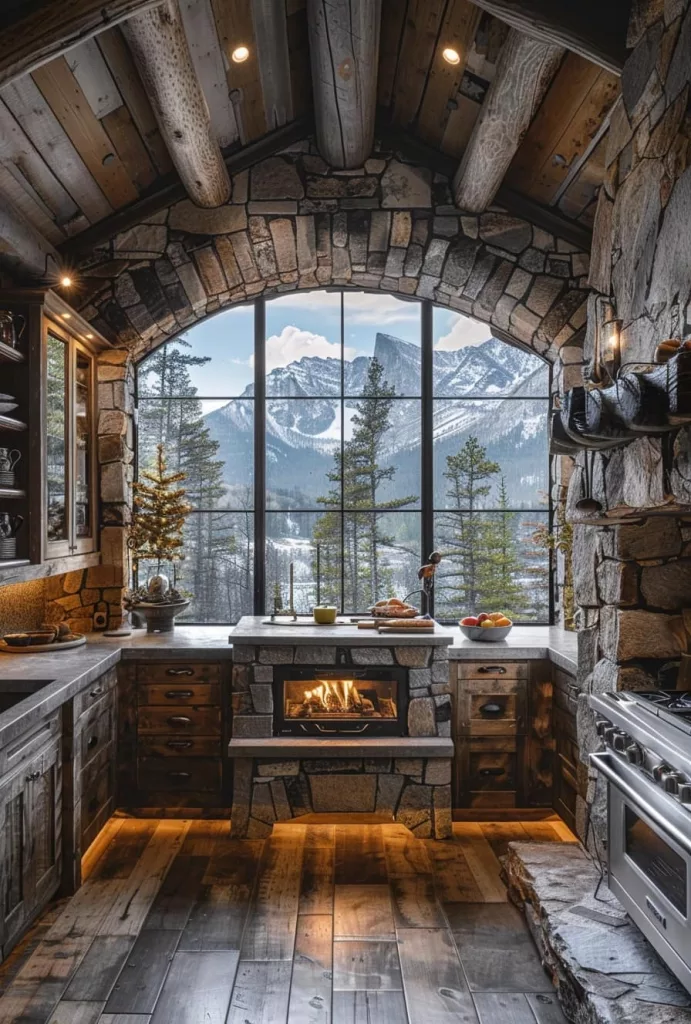
Joys Experienced
Despite the challenges, living in a mountain house offers immense joy. The serene environment provides unparalleled peace and tranquility, away from the hustle and bustle of city life. Waking up to breathtaking views of towering peaks becomes a daily delight.
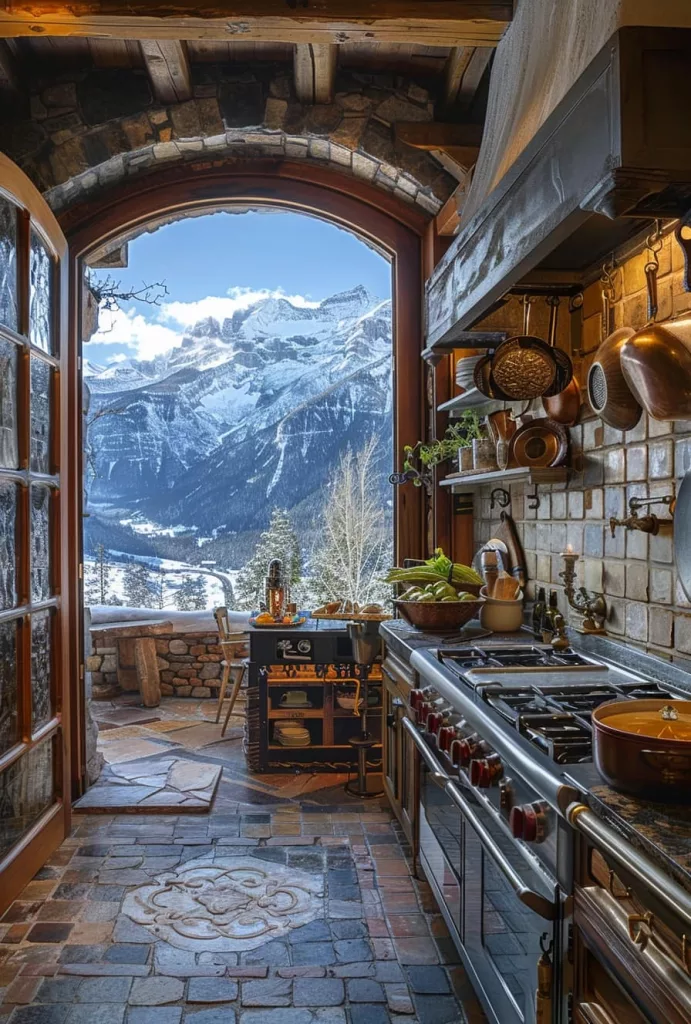
Residents often find solace in nature, engaging in activities like hiking, skiing, or simply enjoying the beauty around them. The sense of freedom and connection with nature fosters a deep appreciation for the simpler things in life.
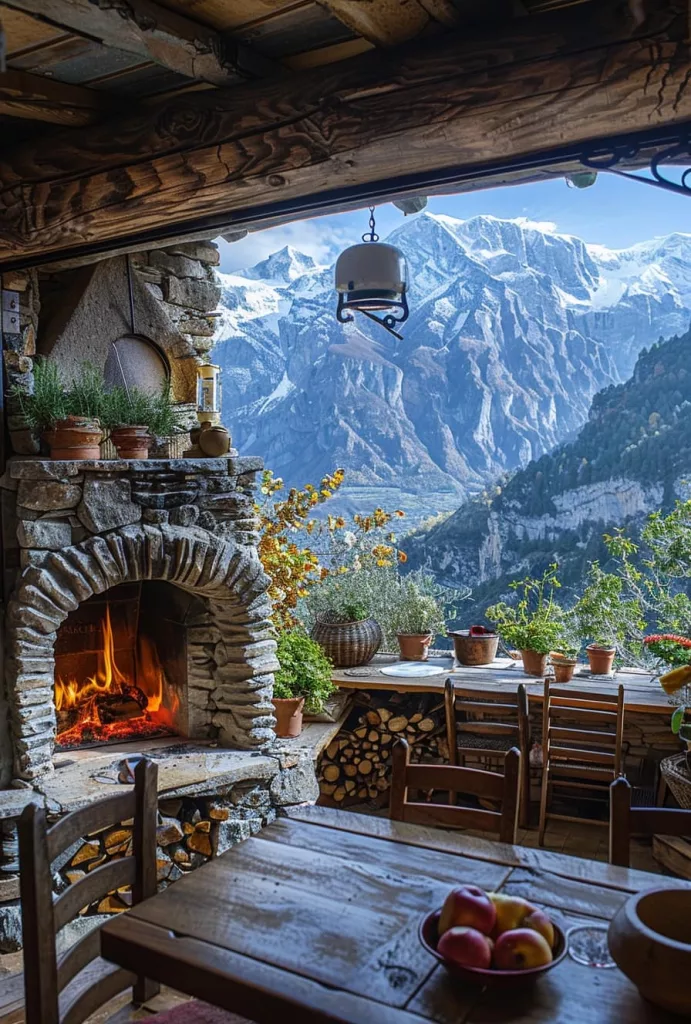
Maximizing Outdoor Spaces
Inviting Areas
Large windows can seamlessly blend indoor and outdoor spaces, providing stunning views of the surrounding mountains. Incorporating outside seating areas, such as cozy nooks or spacious decks, enhances the overall experience.
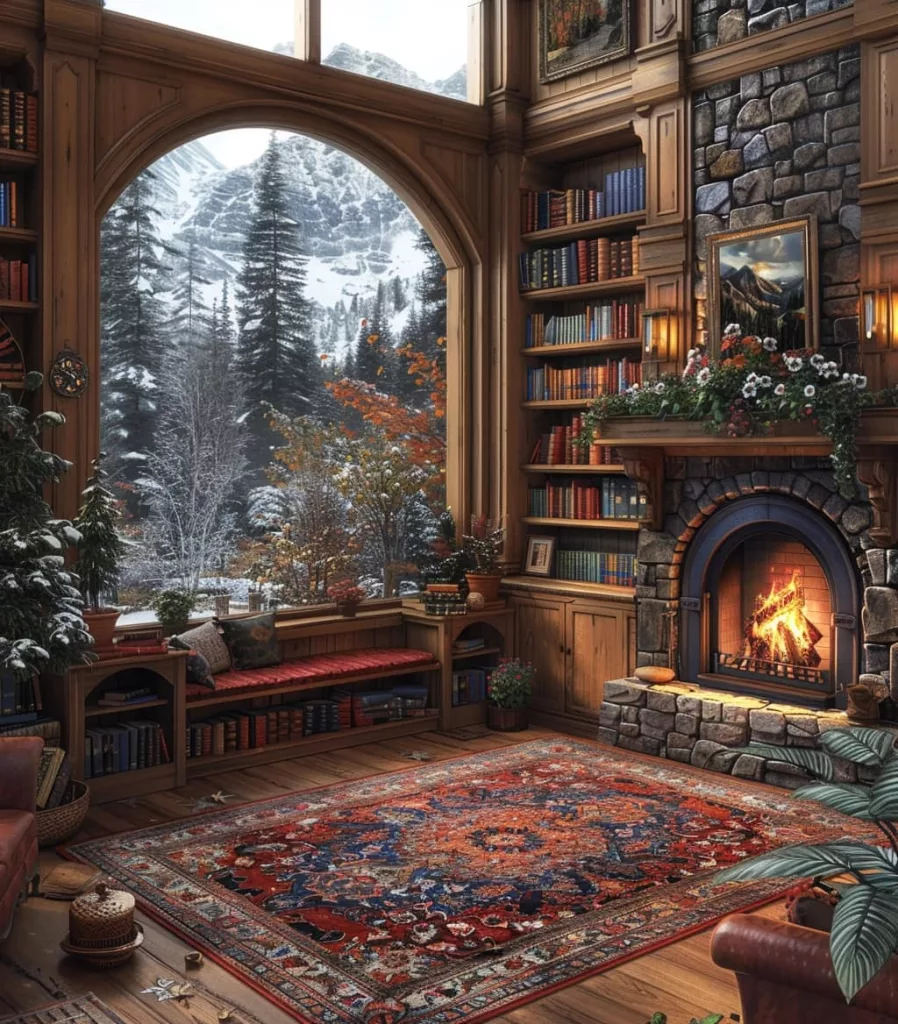
Creating a welcoming atmosphere involves strategically placing furniture to maximize comfort and functionality. By utilizing every corner effectively, you can ensure that guests feel at ease while soaking in the picturesque scenery.
Read more: Beautiful Kitchen Designs: Embracing Natural Elements & Latest Trends
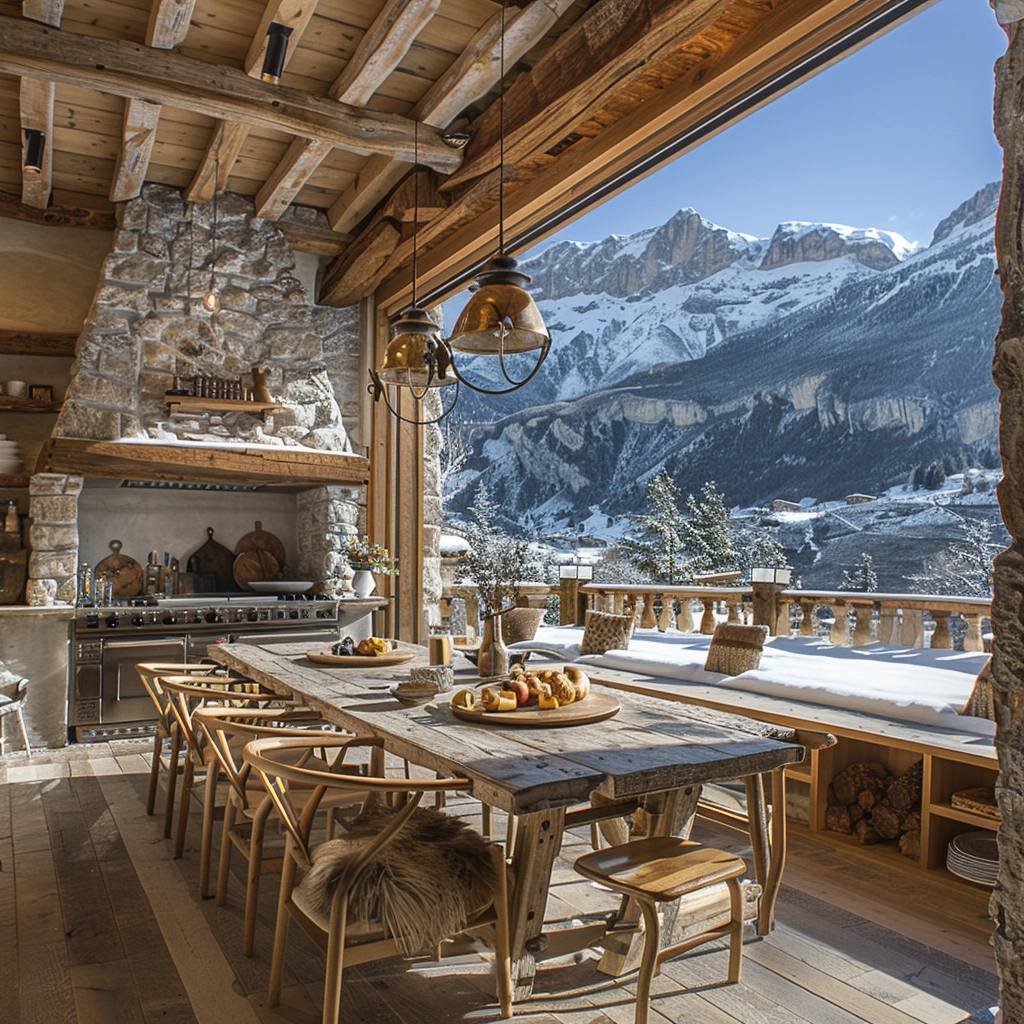
Extending Seasons
Installing a fire pit not only adds warmth but also extends the usability of outdoor spaces during cooler months. With this addition, gatherings can continue well into the evening as everyone gathers around the crackling flames.
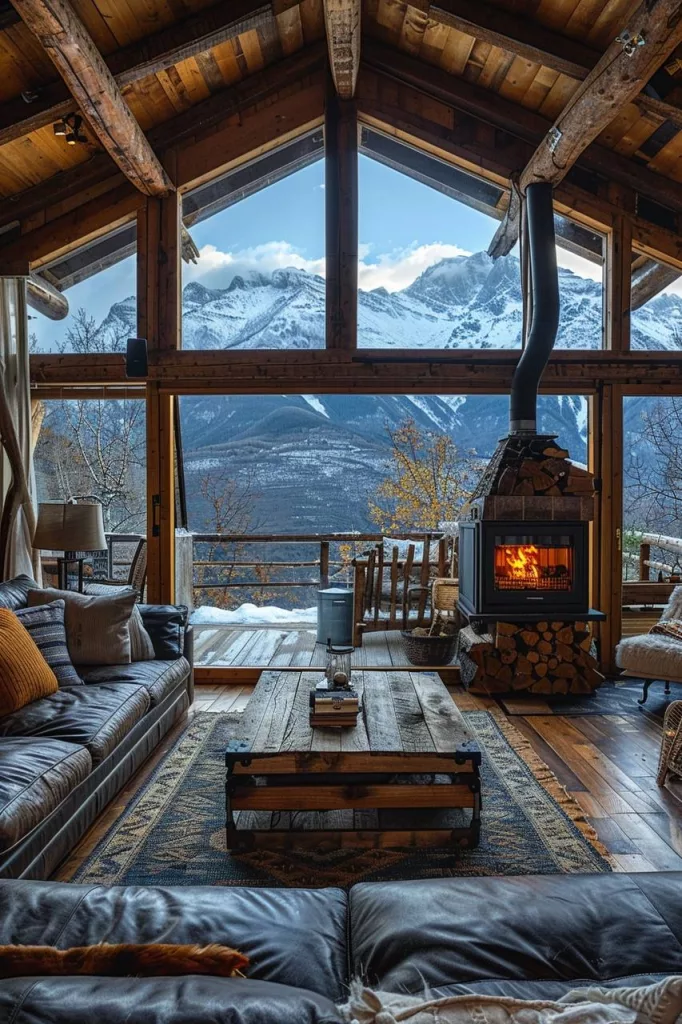
Outdoor kitchens are another fantastic option for those seeking to make the most of their mountain retreats. These additions allow for convenient cooking while enjoying fresh air and scenic beauty.
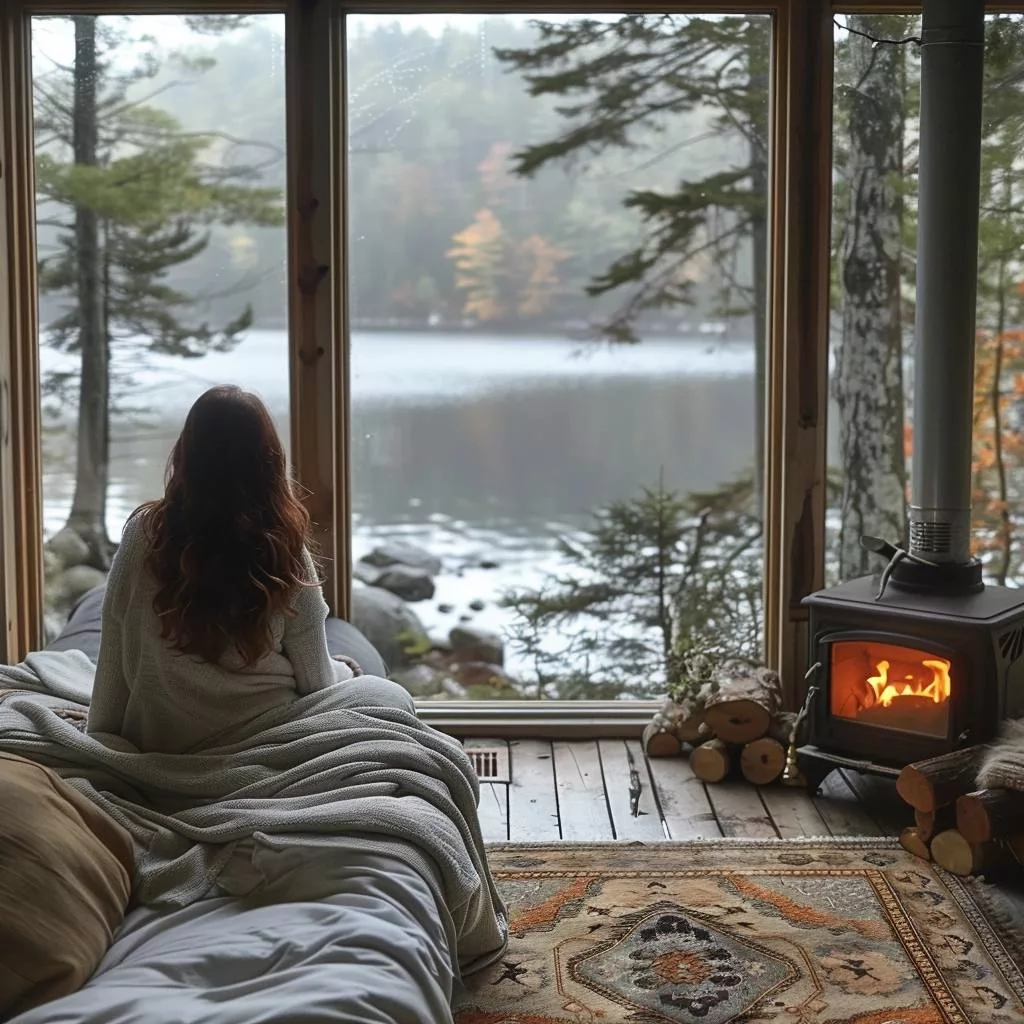
Relaxation Design
Designing outdoor spaces with relaxation in mind is crucial for fully appreciating nature’s beauty. Consider incorporating natural elements like wooden furniture or stone accents to harmonize with the mountain surroundings.
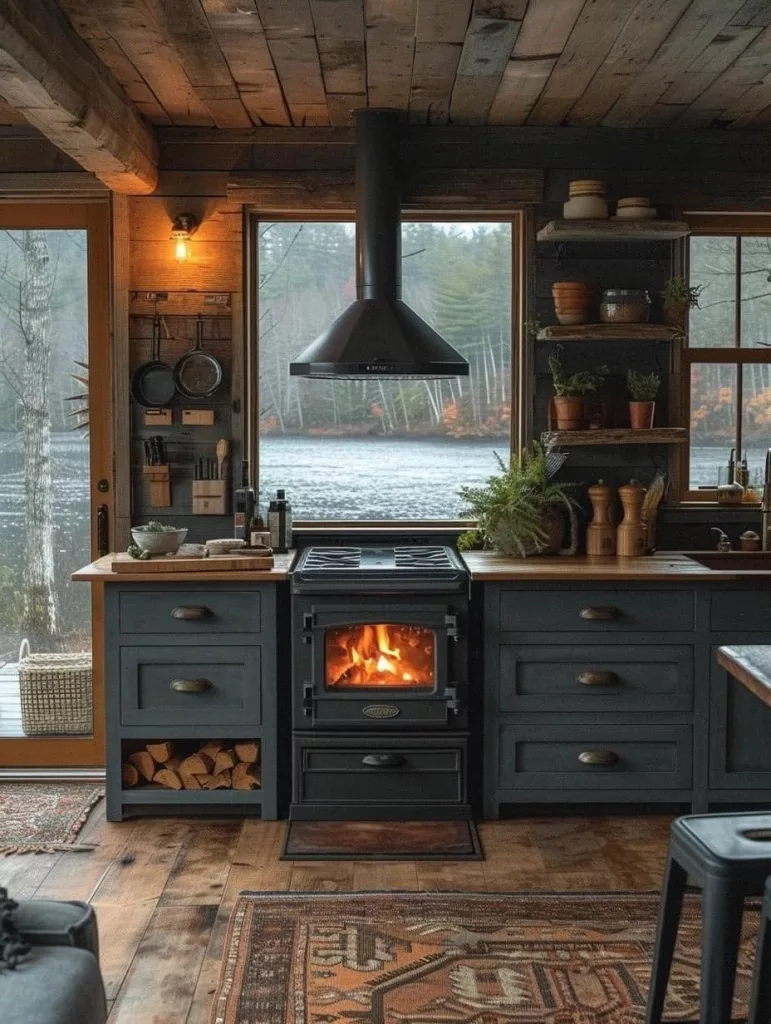
Including comfortable seating options like hammocks or lounge chairs encourages moments of tranquility amidst breathtaking views. A well-thought-out layout that promotes relaxation will undoubtedly enhance your mountain house experience.
Interior Design for Mountain Homes
Furniture Selection
When designing the perfect mountain home, focus on selecting furniture that blends seamlessly with the natural surroundings. Opt for pieces made of wood or stone to complement the rustic charm of the mountains. Avoid heavy, dark furniture that can overwhelm the space.
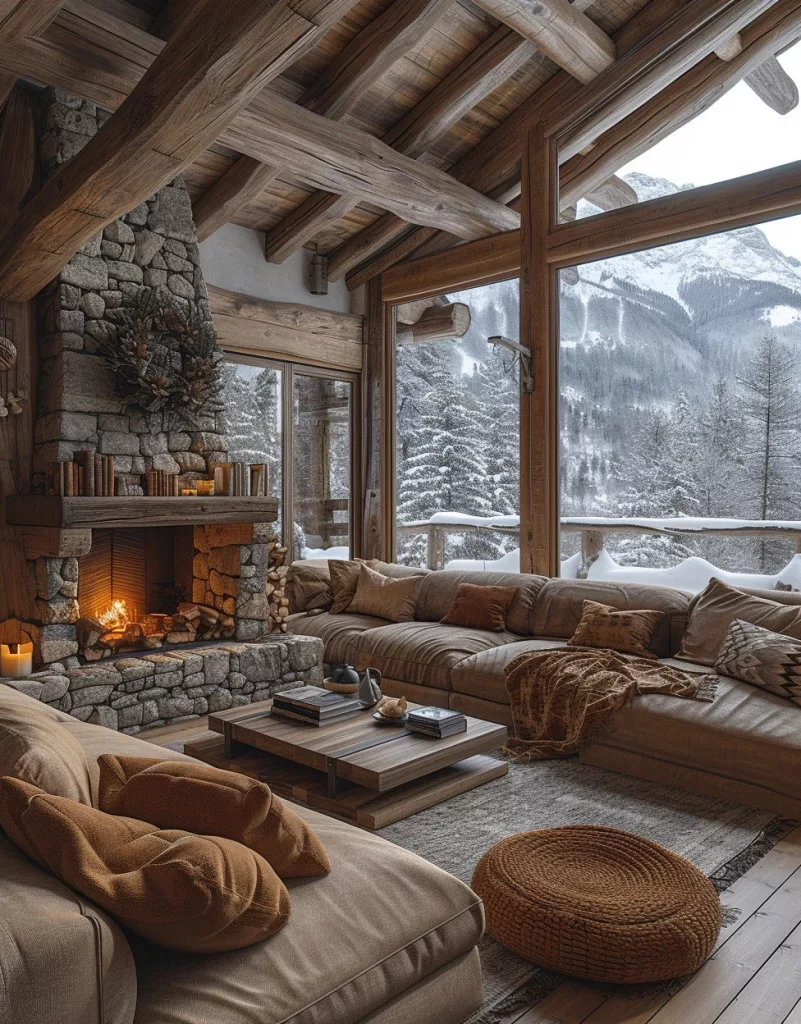
Read more: Log Cabin in the Forest: Benefits, Design, and Maintenance
Cozy Elements
Incorporating cozy elements is essential for creating a warm and inviting atmosphere in your mountain house. Consider adding wood accents such as exposed beams or reclaimed wood furniture to bring a touch of nature indoors. Stone features like fireplaces can also enhance the cozy ambiance.
Tranquil Interiors
To reflect the tranquility of mountain living, choose a color palette inspired by nature. Earthy tones like browns, greens, and blues create a soothing environment that promotes relaxation. Soft textiles such as wool rugs and plush cushions add comfort and warmth to your interiors.
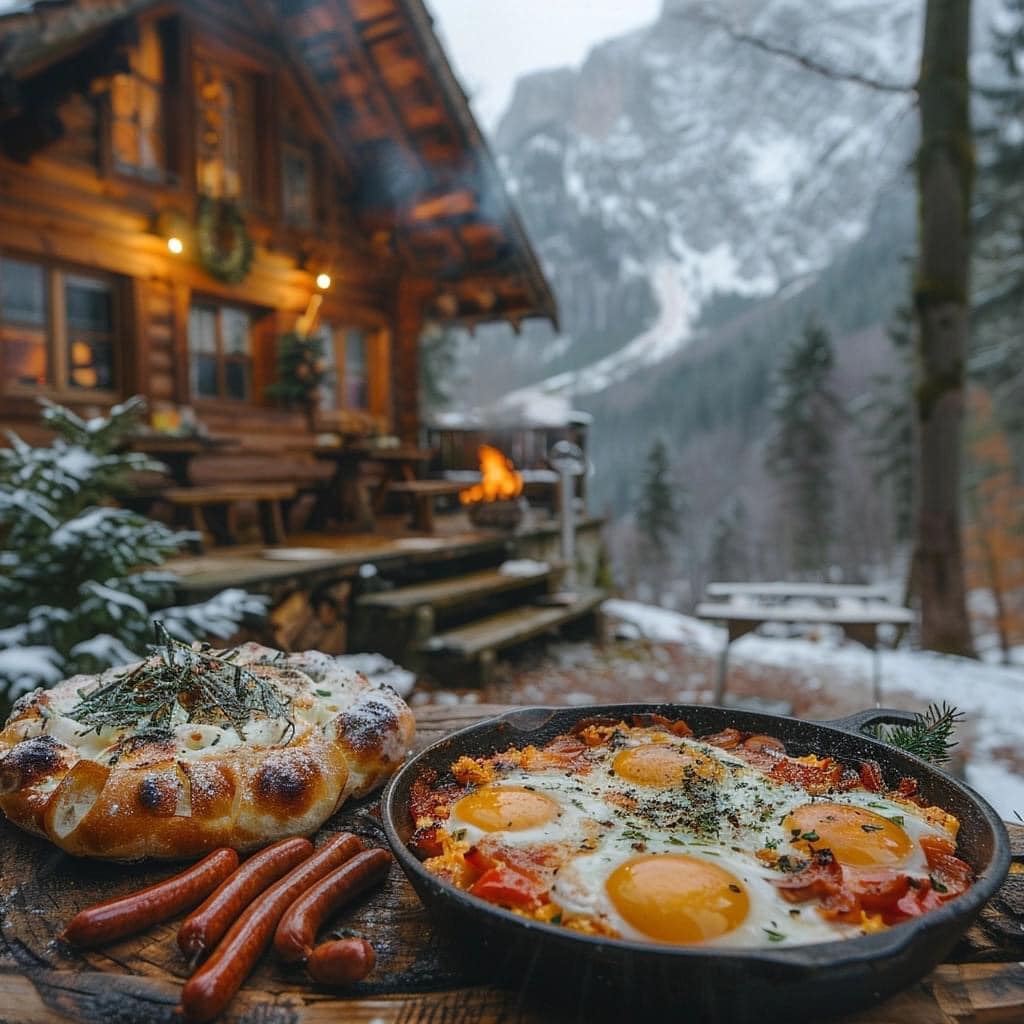
Sustainable Living in the Mountains
Eco-Friendly Practices
Implement eco-friendly practices like solar panels and rainwater harvesting systems to reduce environmental impact. These solutions help minimize reliance on traditional energy sources, promoting sustainability.
Off-Grid Solutions
Embrace off-grid solutions for energy independence in remote mountain locations. By utilizing renewable energy sources and efficient technologies, residents can achieve self-sufficiency while minimizing their carbon footprint.
Preserving Natural Environment
Prioritize the importance of preserving the natural environment through sustainable living practices. By adopting eco-conscious habits such as composting, recycling, and reducing waste, individuals contribute to conserving the beauty of mountain landscapes.
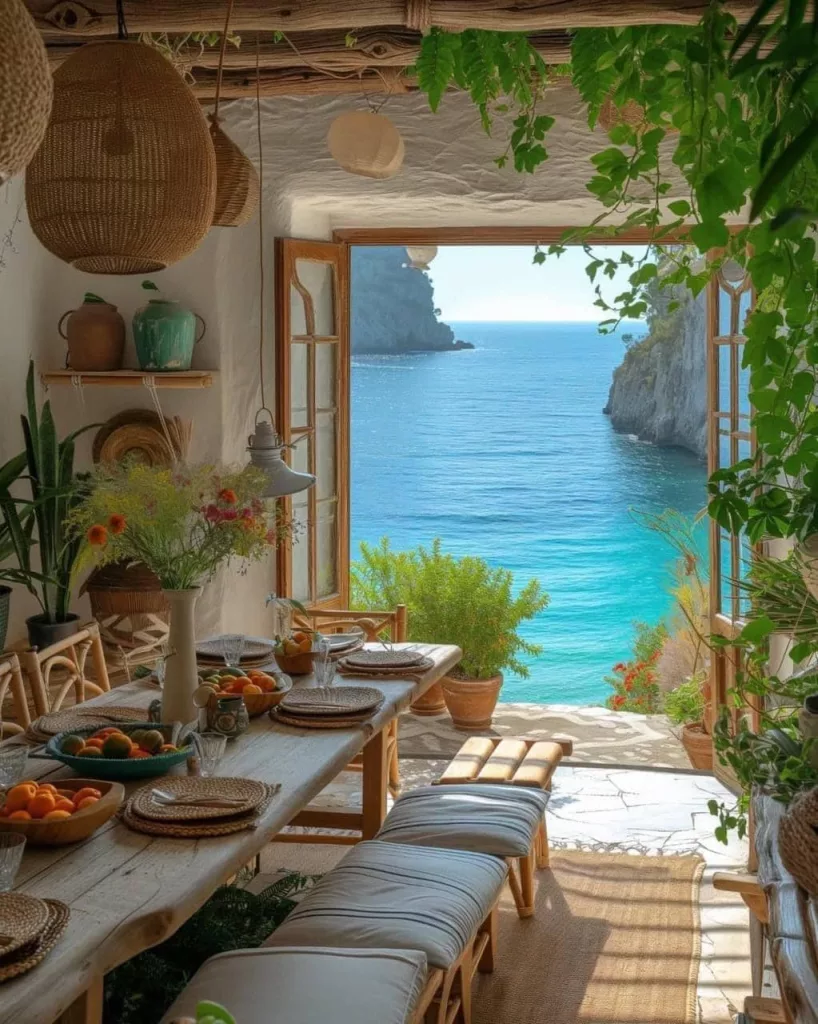
Closing Thoughts
You’ve now seen the magic of mountain house living – from design tips to capturing stunning views and embracing sustainable practices. By blending architecture with nature, you can create a serene retreat that reflects your style and values. Remember, enhancing your outdoor spaces and interior design can truly elevate your mountain living experience.
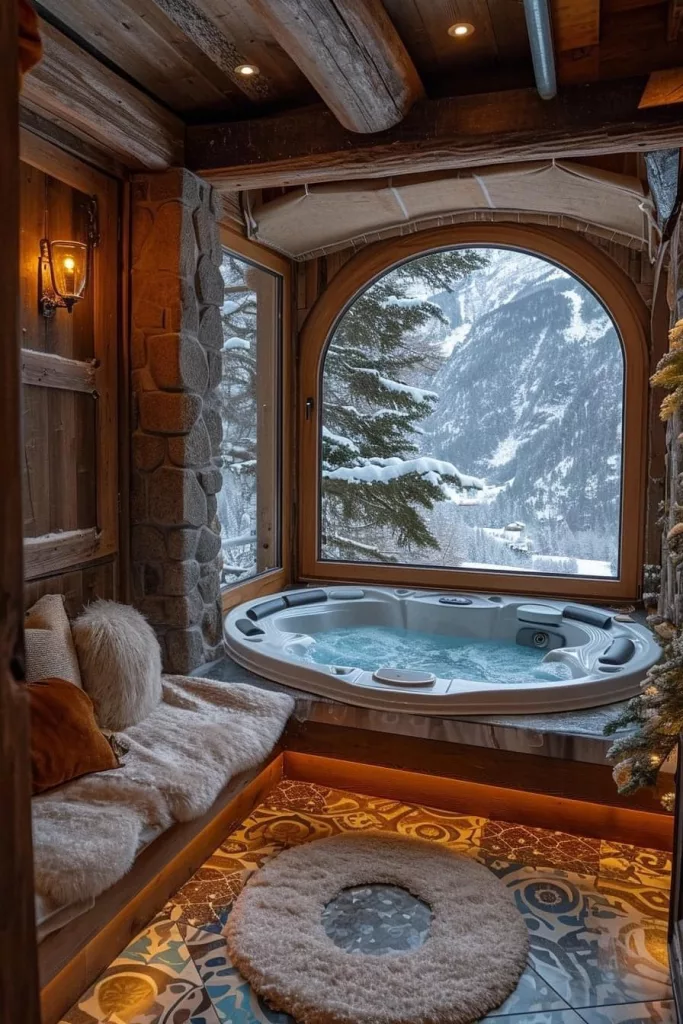
So, go ahead and infuse your mountain home with personality and eco-conscious choices. Share your story, inspire others, and continue exploring ways to make your mountain abode a true sanctuary. Your dream mountain house is not just a place; it’s a lifestyle waiting for you to embrace it fully.











